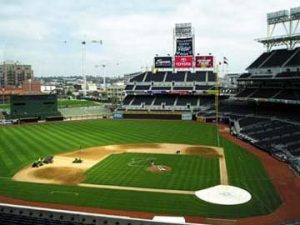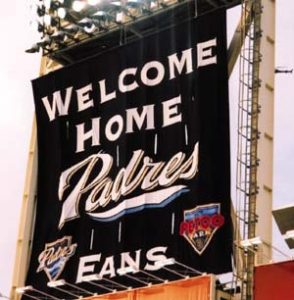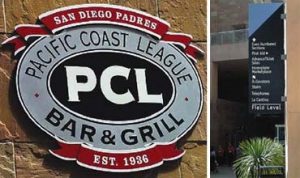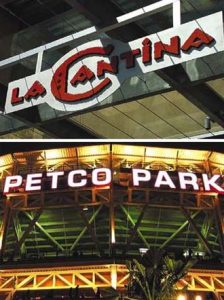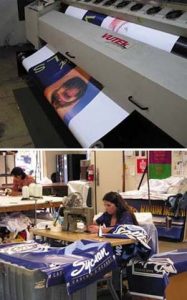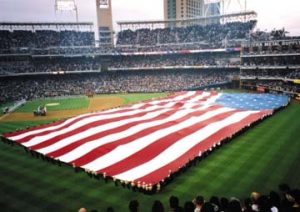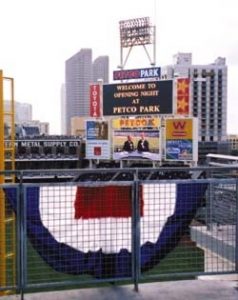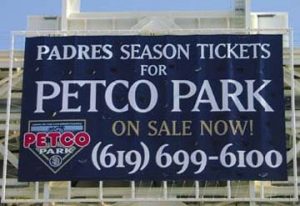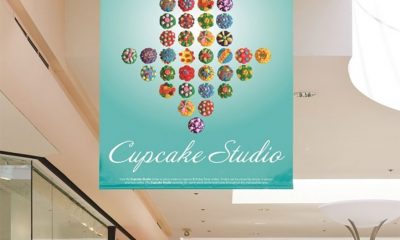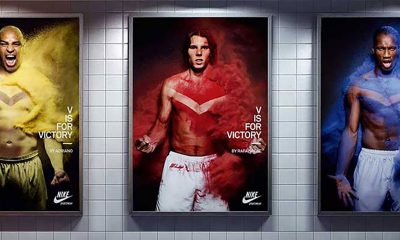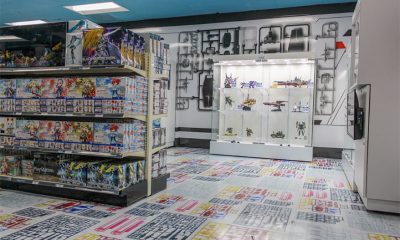Petco Park Tidbits
Location: South Embarcadero/ East Village
Groundbreaking: Summer 2000
Opening Date: Spring 2004
Total Capacity: 46,000
Project Acreage: Ballpark and elevated grass park: 18 acres; ballpark district: 26 blocks.
Dimensions: 322 ft. (rightfield), 387 ft. (right-center), 396 ft. (centerfield), 367 ft. (left-center) and 334 ft. (leftfield)
Project Costs: Total: $449.4 million; ballpark: $294.1 million; land acquisition and infrastructure: $151.3 million.
After having spent more than three decades at Qualcomm (formerly Jack Murphy) Stadium, the San Diego Padres have a new home. Christened Petco Park (after Petco Animal Supplies Inc., who, in 2003, purchased the naming rights for $60 million over 22 years), the multi-million-dollar, baseball-only stadium features a grass field; a stucco, stone and steel construction; a palm court; water walls; a Padres Hall of Fame 250-seat auditorium; a kids-entertainment zone and theatre; and an elevated grass park where fans can watch Padres games for free.
Graphic Solutions, one of several local companies involved with the project, served as the stadium’s environmental-graphics designer; Santee, CA-based R B Industries served as the park’s primary sign fabricator. In business for more than 30 years, Graphic Solutions designs environmental graphics for various venues, including entertainment and retail.
According to Simon Andrews, a Graphic Solutions principal, his company had no specific experience designing ballpark signage. Thus, it partnered with David Ashton & Assoc., a Baltimore-based firm, which designed the Orioles’ Camden Yards ballpark signage and had previously worked with the Padres’ project manager, Larry Lucchino.
Andrews said, "The project was basically a strategic alliance between us and David Ashton & Assoc. Being the only local sign designer involved, we were at an advantage — we could easily follow up on the project’s progress."
Andrews explained that a primary project goal involved creating a contemporary venue, rather than a traditional ballpark. He noted that the playing field is the park’s only traditional aspect. For a more conventional look and feel, the park features an intimate seating bowl, so spectators can be closer to the playing field, and an open concourse, which allows visitors a view — depending on which way they turn — of the San Diego Bay and other city landscapes.
Furthermore, tan-colored stone represents the area’s ocean cliffs; white steel depicts the harbor’s industrial area, and plants and flowers throughout the park mimic San Diego’s lush environment.
Andrews explained that the sign-design team worked closely with the project’s design architect, Antoine Predock (Albuquerque, NM), to ensure the signage complemented the park’s contemporary architectural theme. To achieve this goal, the team opted for subtle, but strong, sign designs, which were also very economical to produce. In addition to vinyl and Sintra
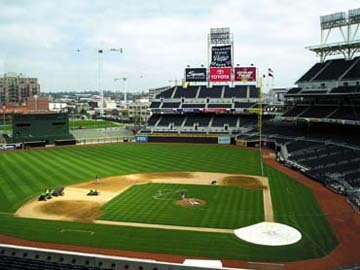

 Tip Sheet3 days ago
Tip Sheet3 days ago
 Business Management1 week ago
Business Management1 week ago
 Women in Signs2 weeks ago
Women in Signs2 weeks ago
 Real Deal4 days ago
Real Deal4 days ago
 Editor's Note1 week ago
Editor's Note1 week ago
 Line Time2 weeks ago
Line Time2 weeks ago
 Product Buying + Technology1 week ago
Product Buying + Technology1 week ago
 Women in Signs4 days ago
Women in Signs4 days ago
